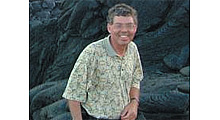FCC Approves Key Bridge Global TV Bands Database System

Doug Lung
The FCC Office of Engineering and Technology has approved Key Bridge Global, LLC's TV band database system after a thorough examination of the company’s offering.
In a letter to Jesse Caulfield, president of Key Bridge Global, Julius Knapp, OET chief said: “Based on our own examination and testing of the Key Bridge database system, the results of the public trial, including comments submitted to Key Bridge during the trial and Key Bridge’s responses to those comments, and the fact that no comments expressing concerns were submitted in response to the Public Notice, we find that Key Bridge has demonstrated that its channel availability calculator is able to properly determine the unused channels at a location that may be used by the different types of unlicensed TV bands devices.”
Knapp’s letter also noted that the commission found that the database’s registration procedures were capable of properly recording, storing and retrieving protected facility information that was not in the FCC databases. OET also found that the database system properly synchronized registration records with the TV bands databases of Spectrum Bridge, iconectiv (formerly Telcordia Technologies, Inc.) and Google, using the White Space Database Administrator Group’s database-to-database synchronization interoperability specification.
The commission stated that it “therefore finds that Key Bridge’s TV bands database system is compliant with the commission’s rules for TV bands database systems and ready for operation.”
The FCC, however, did state that it has not yet tested this database system with an actual TV bands device, noting that it would verify this functionality after “an application for a TV bands device that accesses Key Bridge’s database system is processed.“
In an indication the FCC is still tweaking requirements for TV band device registration, the letter also noted, “As the implementation of the commission’s plan for operation of TV bands devices proceeds, we anticipate that there may be additional changes, generally minor, in various aspects of the plan. There may also be elements of Key Bridge’s database system that will need to be adjusted as experience is gained with TV white spaces operations by the commission, the database administrators, device manufacturers, and device users.”
For additional information, visit the Key Bridge Global website, read FCC Public Notice DA 13-2211 and the letter from Julius Knapp to Jesse Caulfield.
LS telecom AG completed the public trial of its TV bands database system on Aug. 8, 2013 and before approving the system, the FCC issued a Notice requesting comments on the trial. The deadline for comments is Nov. 29, 2013, with reply comments due by Dec. 6, 2013. See the summary report for the results of the trial.
As you've probably noticed, an increasing number of TV band white space systems are being deployed throughout the country. While these are primarily in rural areas, the Google/Adaptrum system that was recently approved (see article in this week's RF Shorts) could see deployment in areas where wireless microphones and other licensed broadcast low-power auxiliary devices are being used. Stations that want to protect their wireless microphone operations should register them in one of the approved database. Some TV band database system operators offer services that make it easier for broadcasters to enter this information and keep it updated.
The professional video industry's #1 source for news, trends and product and tech information. Sign up below.

Doug Lung is one of America's foremost authorities on broadcast RF technology. As vice president of Broadcast Technology for NBCUniversal Local, H. Douglas Lung leads NBC and Telemundo-owned stations’ RF and transmission affairs, including microwave, radars, satellite uplinks, and FCC technical filings. Beginning his career in 1976 at KSCI in Los Angeles, Lung has nearly 50 years of experience in broadcast television engineering. Beginning in 1985, he led the engineering department for what was to become the Telemundo network and station group, assisting in the design, construction and installation of the company’s broadcast and cable facilities. Other projects include work on the launch of Hawaii’s first UHF TV station, the rollout and testing of the ATSC mobile-handheld standard, and software development related to the incentive auction TV spectrum repack. A longtime columnist for TV Technology, Doug is also a regular contributor to IEEE Broadcast Technology. He is the recipient of the 2023 NAB Television Engineering Award. He also received a Tech Leadership Award from TV Tech publisher Future plc in 2021 and is a member of the IEEE Broadcast Technology Society and the Society of Broadcast Engineers.
